A Certain Tendency in Post-New Wave French Shakespearean Cinema: from early Truffaut to late Godard via Orson Welles
Anthony Guneratne
1 There is a distinct similarity between François Truffaut’s celebrated 1954 massacre of conventional screenwriters, “A Certain Tendency in French Cinema,” and an account published some two centuries earlier of a ritual massacre of noisy cats by a group of irate printers’ apprentices. The latter incident would not even be worthy of our attention had it not engaged the distinguished historians Robert Darnton and Roger Chartier in a debate as to whether any historically-situated way of thinking could be taken to prove that “Frenchness exists.” [1] While I share Chartier’s methodological skepticism, I would like to advance a mildly contrarian argument that the intersection of distinctive characteristics that inhered to the kinds of filmmaking I treat ― filmmaking that had an intensely medium-specific, anti-hegemonic, culturally inclusive, even vaguely incestuous character ― could be nothing but French in terms of cultural configuration and geographical specificity. [2]
2 Truffaut was just twenty-one when André Bazin, editor of Cahiers du cinéma, reluctantly permitted the publication of his trenchant manifesto which advanced a position that Bazin presently modified and rechristened the politique des auteurs. The phenomenon Truffaut excoriates could, with a few modifications, be applied to film industries elsewhere; the “tendency” I describe cannot be applied as broadly precisely because it encompasses a more specific terrain. My ironic reworking of Truffaut’s famous intervention has, in fact, the explicit intent of defusing any notion that I claim to offer a comprehensive diagnosis of French cinema ― I am not one of Darnton’s Encyclopedists ― or even of French Shakespeare.
3 Yet, my invocation of Truffaut also serves as a point of entry into the critical debates of his time, debates that retain their significance for all subsequent discussions of adaptation. As Ginette Vincendeau points out, Truffaut was less an iconoclast than a conservative of a particular stripe who, momentarily disagreeable to those such as the organizers of the Cannes festival, proved more lastingly so to the radical contributors to the journal Positif. [3] As early as 1948, Alexandre Astruc had predicted a new avant-garde that was inevitable, owing to the pioneering efforts of Jean Renoir, Orson Welles and Robert Bresson, one that would make the bowdlerizing activities of screenwriters obsolete and the cinema an instrument for expressing a director’s thought. [4] Six years elapsed before Truffaut returned to the same terrain, this time attacking the government-sponsored Tradition de la qualité whose scriptwriter-guardians traduced appropriated nuggets of French history and literary culture through a cinema of equivalences, patching up excisions of plot with blasphemies and repetitive parodies of social institutions. [5]
4 Thus, far from rejecting a script as such, Truffaut envisioned existing texts as the starting point for a genre that rigorously melded a literary work and its intertexts with biography and autobiography. [6] As I have pointed out at some length in a book devoted to adaptations of Shakespeare, Orson Welles offers his own commentary on his Oedipally-paternal relationship to the nouvelle vague by transplanting the textual surfaces of Jules et Jim, along with its star Jeanne Moreau, into his own Shakespeare collage, Chimes at Midnight (1965), [7] in which Truffaut’s sexually-liberated Catherine finds herself transformed into the six-penny harlot, Doll Tearsheet, whose favors are enjoyed equally by Falstaff and the relentlessly Oedipal Hal. The reference seems even more poignant in hindsight considering the frequent parodies of the Tradition of Quality by nouvelle vague directors, with differing motivations and approaches to filmmaking, and Truffaut’s own complex relationship to Bazin’s intellectual and theoretical paternity.
5 Nor is Truffaut’s the only problematized filiation that we can associate with Chimes at Midnight and Welles’s later Shakespearean projects. Claude Chabrol, sufficiently uneasy with the idea of a New Wave to compare what happened to the Cahiers team after 1958 as the “marketing of a brand of soap,” [8] perhaps took the idea of filial impiety to its limits by insisting on the literal incorporation of Welles and his œuvre into his filmmaking. His initially symbolic reference to the Macbeth-Hamlet fiasco at the 1948 Venice film festival in his Ophélia (1962), soon gave way to his insistence that Welles and the lead actor in Welles’s adaptation of Kafka’s The Trial (1961), Anthony Perkins, both star in his post-New Wave La Décade prodigeuse (1971), a reworking, amongst other things, of the pervasive themes of Chimes: monstrous fathers, unfaithful sons, the betrayals of history, and the implacable cruelty of time (fig. 1).
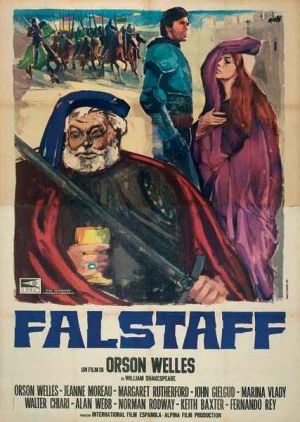
Fig. 1. Detail from an Italian poster for Chimes at Midnight (Orson Welles, 1965). The design foregrounds the sensation of loss and the erosions of time, in the doubly-discarded person of Falstaff, while Doll Tearsheet’s defection to the future king places her, pensively, between them.
6 Since Welles’s Shakespearean techniques are also refracted through the work of other auteurs striving to avert a permanent dissolution into the enveloping waters of the New Wave (figured quite literally as such by Godard in both Le Mépris [1963] and the much later King Lear [1987]), [9] I will adopt an unorthodox approach that is not dissimilar to Darnton’s, if just as obviously tinged by Chartier’s skepticism: in other words, I will eschew authorial authority or individual style as keys to textual interpretation in favor of drawing together sets of those thematic linkages that allowed for difference and variety within a complex, ever-evolving film movement. Far from remaining fixed or demarcating the boundaries of a special sub-national community, these are commonalities that ― as the nouvelle vague became increasingly vague and less and less nouvelle ― found expression in excess, parody, stylization, and auto-critique. Central to the argument that such an approach advances is the recognition that for the filmmakers in question, who were fully aware of Welles’s role as the cinematic surrogate father-figure of the French New Wave, the adaptation of Shakespeare periodically becomes a mechanism of citing Welles’s Shakespearean techniques and, on occasion, even his œuvre.
7 In the argument that follows, I have followed a logical rather than chronological sequence, assuming the reader’s complete familiarity with the adapted texts and, to some extent, with the films themselves.
Citational Excess in Chabrol and the 1948 Macbeth
8 Cinephilic references to the medium consisting of cameo appearances by film personalities, elaborate citations of actors’ mannerisms, themes and visual devices drawn indiscriminately from Europe’s earlier art cinemas and Hollywood’s “B” genres, even adaptations of adaptations, can be found in films that predate the 1959 breakthrough moment of the New Wave. Indeed, Rivette’s 1957 film Paris nous appartient, although released in 1961 after the comprehensive transformation of the Cahiers group into the nouvelle vague, appears to sum up these tendencies to the intense approval of others affiliated with them, such as Jacques Doniol-Valcroze. [10]
9 Even so, the anxiety of the Cahiers group to assert cinema’s equivalence to the other arts manifests itself in an early distancing of these forms of citation from techniques clearly stigmatized as reflexive, literalist, or even slavish forms of adaptation, that very insistence on cinema being an ideal medium of translation that is the necessary corollary to Truffaut’s manifesto. Hence the particular textual departures from Hamlet that lend Chabrol’s 1962 Ophélia its overwrought, consciously-Surreal atmosphere, a visual excess through which Welles is invoked as the talismanic adapter-against-the-grain of the text in contrast to Laurence Olivier the slavish translator-literalist.
10 By the time Chabrol took up Welles’s standard, the persistent comparison to Olivier that was to dog Welles throughout his career had already been made. [11] Macbeth was slated for release soon after Olivier’s Henry V (1945), the latter admired by Bazin as a particularly fine intermedial translation. Yet, having shot Macbeth in less than a month using the innovative technique of pre-recording the dialogue, Welles had characteristically pursued a myriad other interests for more than two years, finally preparing it for screening in September of 1948 when it competed in the Venice Film Festival alongside Olivier’s Hamlet (fig. 2). Welles later claimed that it was the US State Department that compelled him to withdraw the film with the result that Olivier, who offered a reading of Hamlet based on that of Freud’s disciple Ernest Jones, found himself adopted by critics as the resident Royal Shakespearian ― his film’s victory propelling him to a knighthood at the tender age of 40. [12] Chabrol does not deign to show the film, only the poster composed of production stills (with that of the momentarily enthroned but fatally-poisoned Olivier given prominence with close-ups). The suggestible protagonist Yvan has only to see this poster and overhear the dubbed French translation to recognize that he is not just any Hamlet, but Olivier’s (fig. 3, 4, 5).
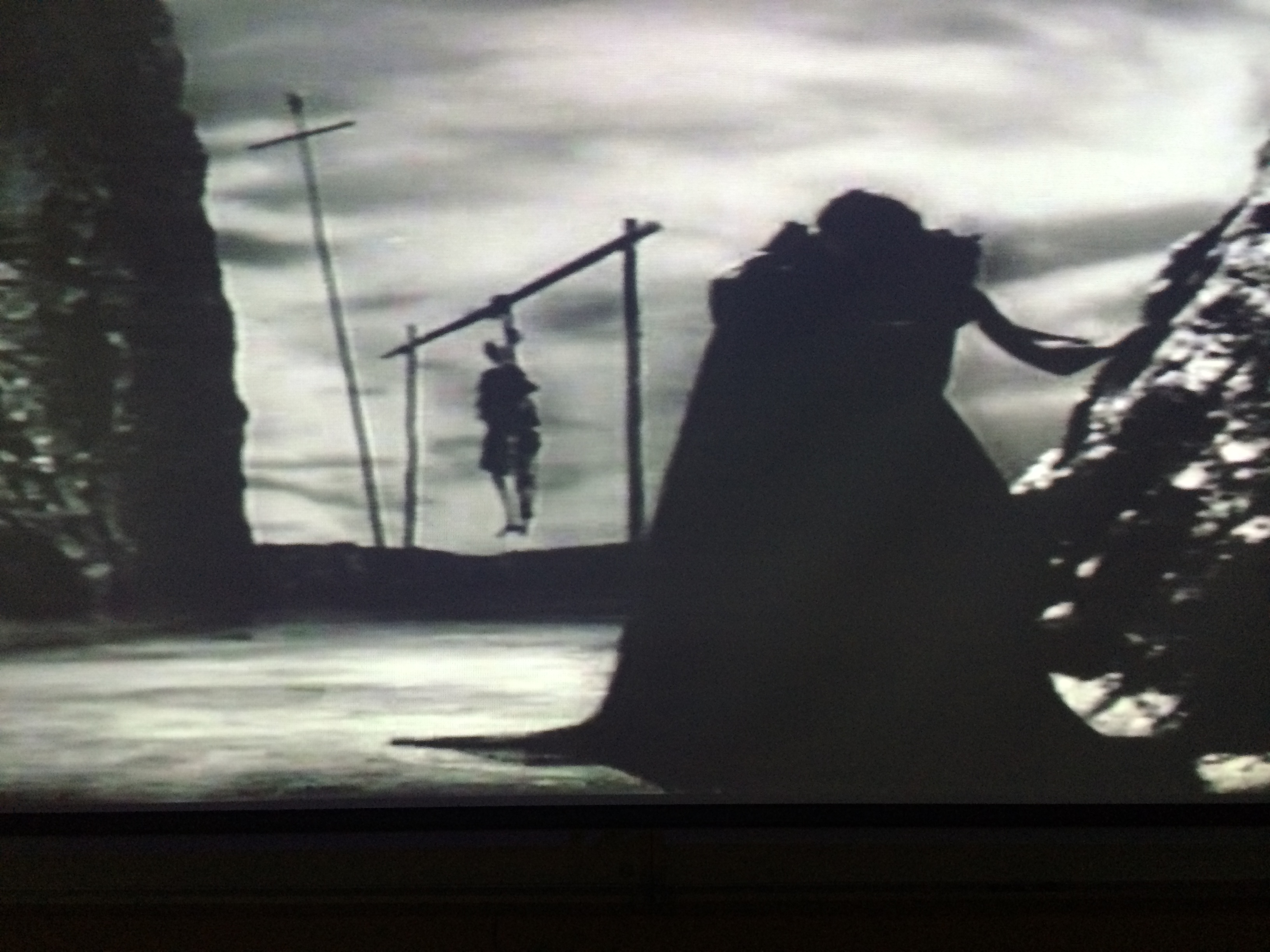
Fig. 2. Frame detail from Macbeth (Orson Welles, 1948). While love and ambition are conflated in silhouette as Macbeth kisses his expectant wife, the price of their lust for power hangs ominously in the background.
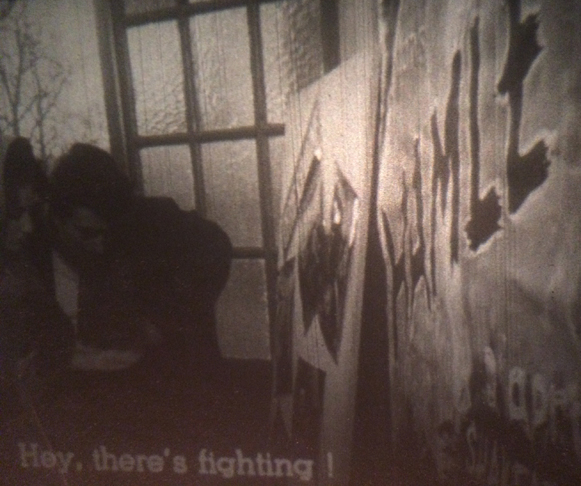
Fig. 3. Frame detail from Ophélia (Claude Chabrol, 1962). Yvan, standing outside a movie theatre with Lucy, hears the dubbed soundtrack to Olivier’s 1948 Hamlet.
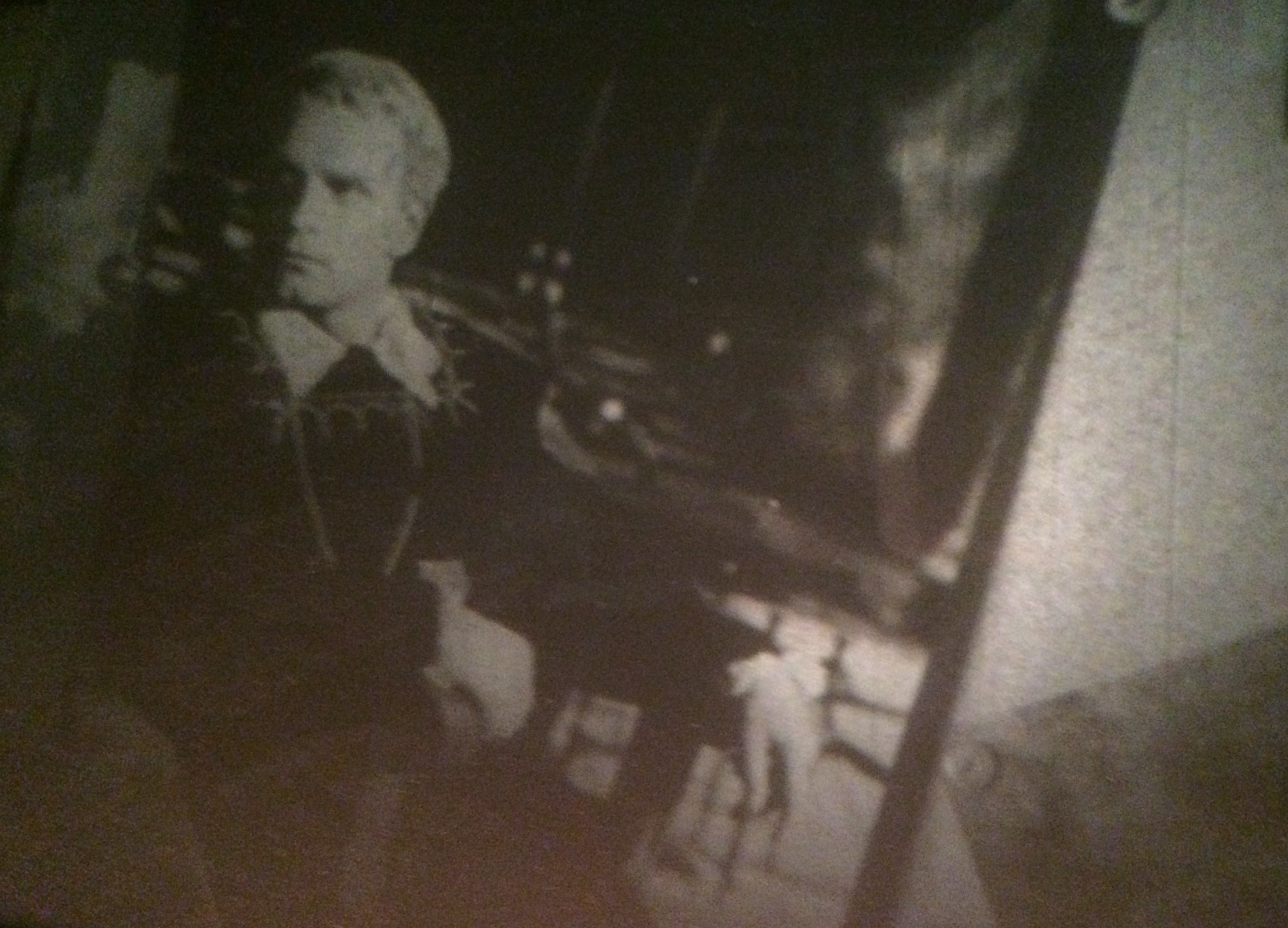
Fig. 4. Frame detail from Ophélia (Claude Chabrol, 1962). A cut into the advertising poster, reveals a detail of Olivier’s enthroned Hamlet.
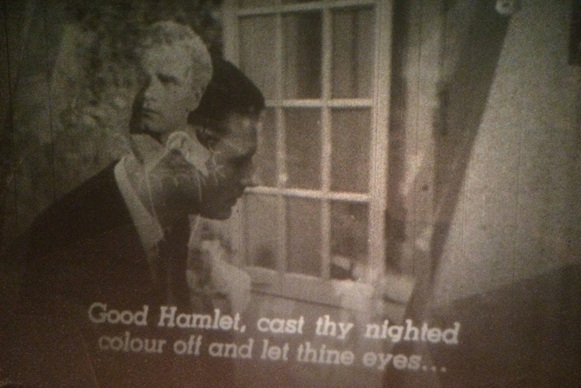
Fig. 5. Frame detail from Ophélia (Claude Chabrol, 1962). A slow dissolve reveals Yvan’s identification with Hamlet.
11 More distantly allusive, the avian imagery that runs through the film, particularly the circling ravens and the foggy, noir-ish black and white visuals described eloquently by Douglas Lanier, allude portentously to Welles’s Macbeth, whose Surrealism Jean Cocteau acknowledged in his sensuous description of a dripping set that encloses its Gothic, melting protagonists. [13] There is even, in the field of dangling, dead birds through which Yvan passes, a portmanteau of the raven associated with Lady Macbeth and Welles’s depiction of the decaying hanged corpses on a gibbet that frame the kiss the newly arrived Macbeth brusquely implants on his wife in their first encounter (fig. 6).
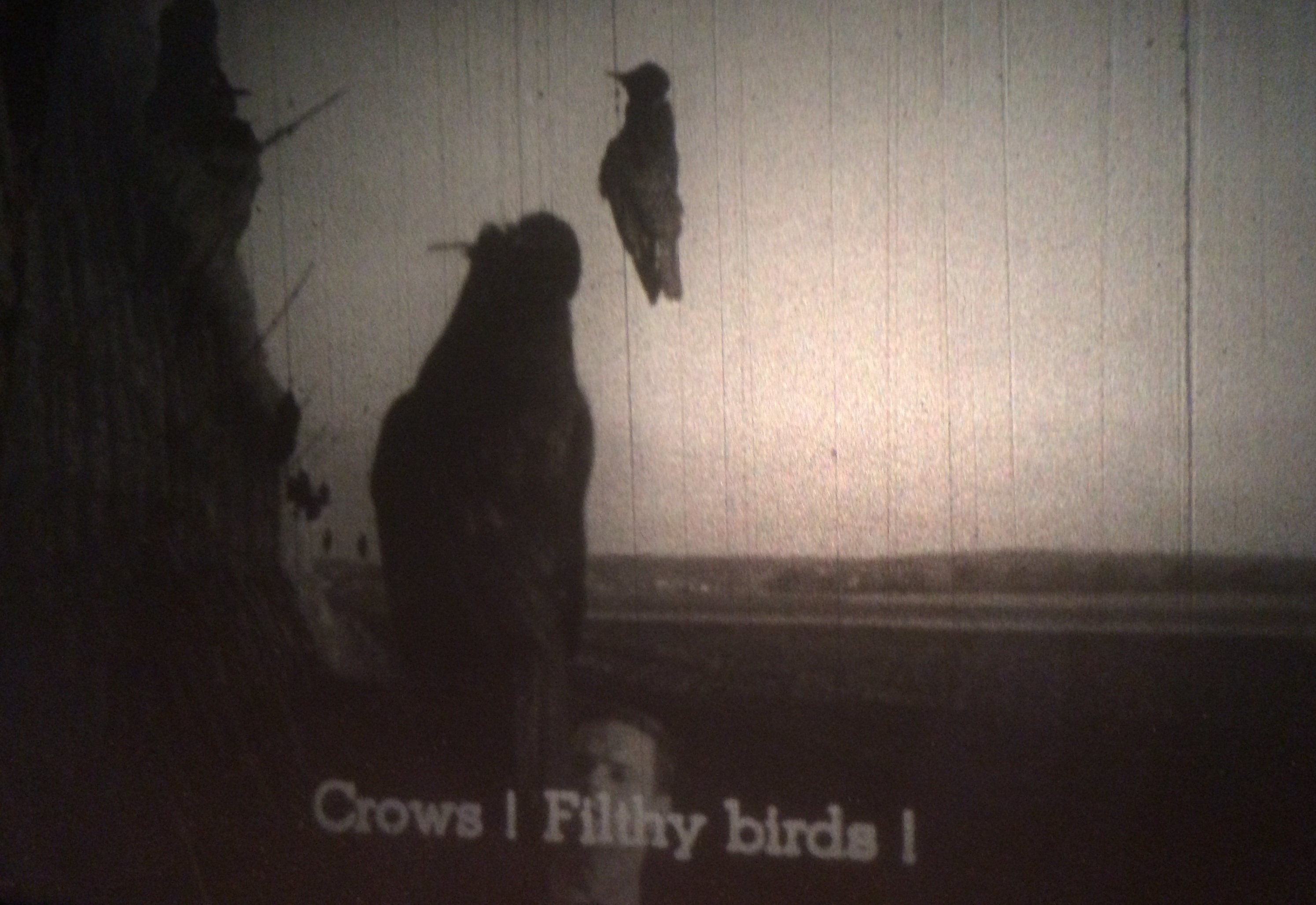
Fig. 6. Frame detail from Ophélia (Claude Chabrol, 1962). Ivan muses as he wanders through fields of dead crows, alluding to similar images in Welles’s films.
12 The burlesque of Olivier through the inverting lens of the New Wave turns out also to be a playful parody of Truffaut: if the cinema can translate verbal signifiers perfectly, then why not reenact a silent, Expressionist Mousetrap as a film and supplement the “real” action with a dead mouse? If such screenwriters as Aurenche and Bost are guilty of the sin of blasphemy, why not have the Polonius character, André, accidentally crucified on a tree? If, for Truffaut, Ralph Habib and the rest of the “commercial” directors are intent on pilfering the remaining literary classics and inserting funerals into them [14] ― why not start the film with a funeral, including a shot from the perspective of the corpse?
13 Here we have not only the death of the author in the offing, but also the demise of the New Wave.
Transnational Allegory in Ruiz, or Somewhere Between Welles’s Othello and Chimes at Midnight
14 Nearly twenty years after that demise, indeed almost as long after the expulsion of the author announced in 1968 and ’69 by Barthes and Foucault, the prolific and deeply respected Raoul Ruiz, Chilean in origin but French by choice and adoption, made a visually opulent, challenging film that rapidly drifted into near-oblivion. The most striking feature of Ruiz’s Richard III (1986) is its apparent incompleteness. Despite extended formal sequences such as a psychedelically-backlit discussion between Clarence and his murderers, extravagant visual metaphors that include Gloucester’s gleeful drowning of a fish in a tankard of ale, and the symbolic inversion of a blossoming bower in which he seduces the ill-fated Anne, Ruiz’s film repeatedly announces itself as a work of enforced exile and a transparent commentary on the betrayals of history as evidenced in a leitmotif of the disposal of dead bodies.
15 That Ruiz had a positive distaste for Hollywood-style narratives is readily apparent in his own theoretical writing, [15] and he devoted the better part of two books on The Poetics of Cinema to deconstructing both its valorization of “central conflict theory” and its insistence on a certain type of plot construction. “A story begins when someone wants something and someone else doesn’t want him to have it,” he quotes mockingly, and altogether surprisingly in the context of his Richard III, in which one character brooks no opposition to his getting what he wants. It is in fact one of those strategies that Hamid Naficy associates with the interstitial film production that operates obliquely between the then of homeland and the now of exile ― and even if Welles and the politically-engaged Latin American Third Cinema into which Ruiz matured cannot be proved to be direct inspirations, [16] the assimilation of Welles’s techniques in adapting Shakespeare are noteworthy. Just as Welles’s Othello is at once an adaptation of Shakespeare and a commentary on contemporary American race relations, the latter aspect signaled by its overt exoticism, Ruiz’s Richard III is so spatially abstract as to have no discernible location and so could only represent a referential space, one that I have previously argued is Pinochet’s Chile. [17] Just as Welles alludes contra Franco to the Spanish Civil War in drawing together Shakespeare’s chronicle of the Grand Mechanism at work in the Histories, Ruiz makes history a protagonist in his film (fig. 7). Whereas Welles relies on Holinshed in the form of an invisible narrator voiced by Ralph Richardson, Ruiz makes his para-diegetic chronicler both visible and audible, a carver of woodcuts whose patient tapping on a chisel deposits an historical residue that is at once flattering and false, an abstraction of time into image.
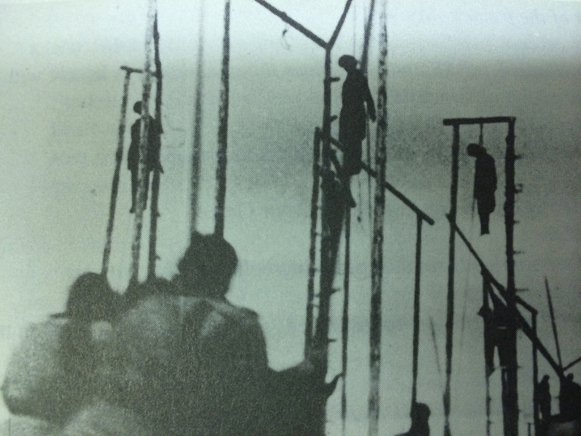
Fig. 7. Inset frame detail from Chimes at Midnight (Orson Welles, 1965). Welles’s recurrent image of the impersonality of the tragedy of history: the anonymous victims of execution, visible even at the start of the film, as Ralph Richardson voices the narrator’s bleak vision taken from Holinshed’s Chronicles.
Conversational Metatheatricality in Rohmer, and Welles’s Chimes
16 Arguably, Welles’s crowning moment as an actor occurs when he is at his most self-deprecating, when he literally crowns himself with a saucepan and, as Falstaff, imitates one of the regnant Shakespearean actors, his own Henry IV in the form of John Gielgud. Adopting Gielgud’s mellifluous delivery, Welles-Falstaff attempts casuistically to persuade his son, none other than Henry’s own, to reward him adequately when he is king, which, as we know, foretells the reverse of that which transpires (fig. 8).
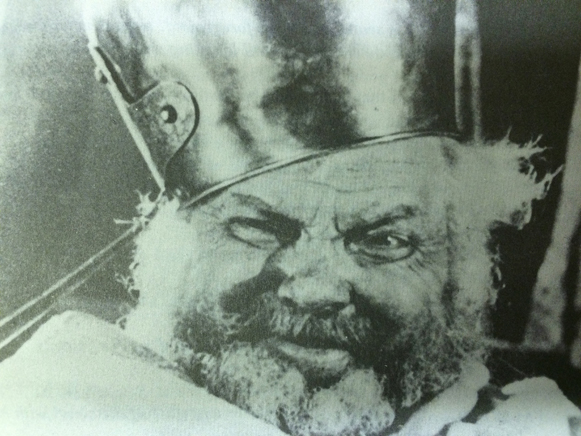
Fig. 8. Frame detail from Chimes at Midnight (Orson Welles, 1965). Welles parodies both monarchy and fatherhood with a saucepan in his Boar’s Head impersonation of King Henry IV.
17 In more than one sense Welles’s film is Spanish, its bleak humor a kind of esperpento more familiar to Saura and his contemporaries than to Hollywood’s audiences. At the risk of a similar essentialism, I might venture to suggest that French films reliant on Shakespeare tend to incorporate performances of Shakespeare (whether as theatre-within-film, film-within-film, or even detached lines of dialogue), a practice that goes beyond the New Wave and that extends from well before André Cayatte’s Les Amants de Vérone (1949), whose plot is concerned with actors who find themselves accidentally starring as Romeo and Juliet, to even more recent efforts than André Techiné’s use of the same play to depict the trials of an actress preparing for the role of Juliet (Rendez-vous, 1985). It could even be observed that this tendency to place Shakespeare on a stage within films was already inscribed into the Tradition of Quality before it was assimilated by the nouvelle vague: it may be symptomatic that in his anti-establishment polemic the only screenwriter Truffaut treats with a measure of respect is the Shakespeare-obsessed Jacques Prévert, Marcel Carné’s collaborator on Les Enfants du paradis (1945) as well as Cayatte’s. Yet, even if we narrowly focus attention on members of the Cahiers group who drew on Shakespeare in the wake of the New Wave rather than its crest, it is to note again the degree to which a Wellesian permeability ― bestowed equally on theatrical fourth walls and camera lenses ― posits Shakespeare as a thing to be learned in rehearsal and performance by actors oblivious to the seepage of his themes into the fabric of their daily existence. The effect is as if the two opposed genres of Japanese studio filmmaking, the historical jidai-geki and the contemporary gendai-geki are forcibly intermingled, with the former eventually permeating the latter.
18 An exemplary and intensely self-conscious instance of this “tendency” can be found in one of a tetralogy of films, Conte d’hiver (1992), in which Éric Rohmer, a Cahiers editor and early proponent of the idea of cinema as superior to the other arts, transforms the camera into an on-stage witness of a miracle. Indeed, the scene from The Winter’s Tale in which Paulina summons Hermione back to life, not only harkens back to early film theorist Béla Bálàz’s insistence that unlike the stage the camera was capable of delineating the microphysiognomy of an actor-character, but also reaffirms the eschatology of cinema that Rohmer advanced and maintained (i.e. that cinema should not strive to be like a Left Bank film, a companion to the nouveau roman, but instead should take the place of what had been the novel). [18] Fittingly, the character Félicie (named, like Perdita, for her condition) engages in an extended debate about the nature of the soul with her erstwhile companion Loïc and his friends. An abrupt cut places us on a stage where Paulina presides over Hermione’s resurrection (fig. 9). In ever-closer framings, the painted statue begins to breathe and then move as if given life by the camera. A sweeping pan to the dimly-lit audience isolates the gesture of Félicie clasping Loïc’s hand, and when we return to the stage it is with a virtuoso lateral tracking shot that keeps Perdita’s transfigured, garlanded head in close-up as she crosses the stage and kneels before her mother (fig. 10, 11, 12). In their subsequent car-ride homewards, Loïc’s intellectual defense of belief (in the recurrent form of Pascal’s Wager) seems stilted in the face of Félicie’s instinctive affirmation of faith in divine providence. And, of course, the film ends with a chance encounter that ratifies Félicie’s belief.
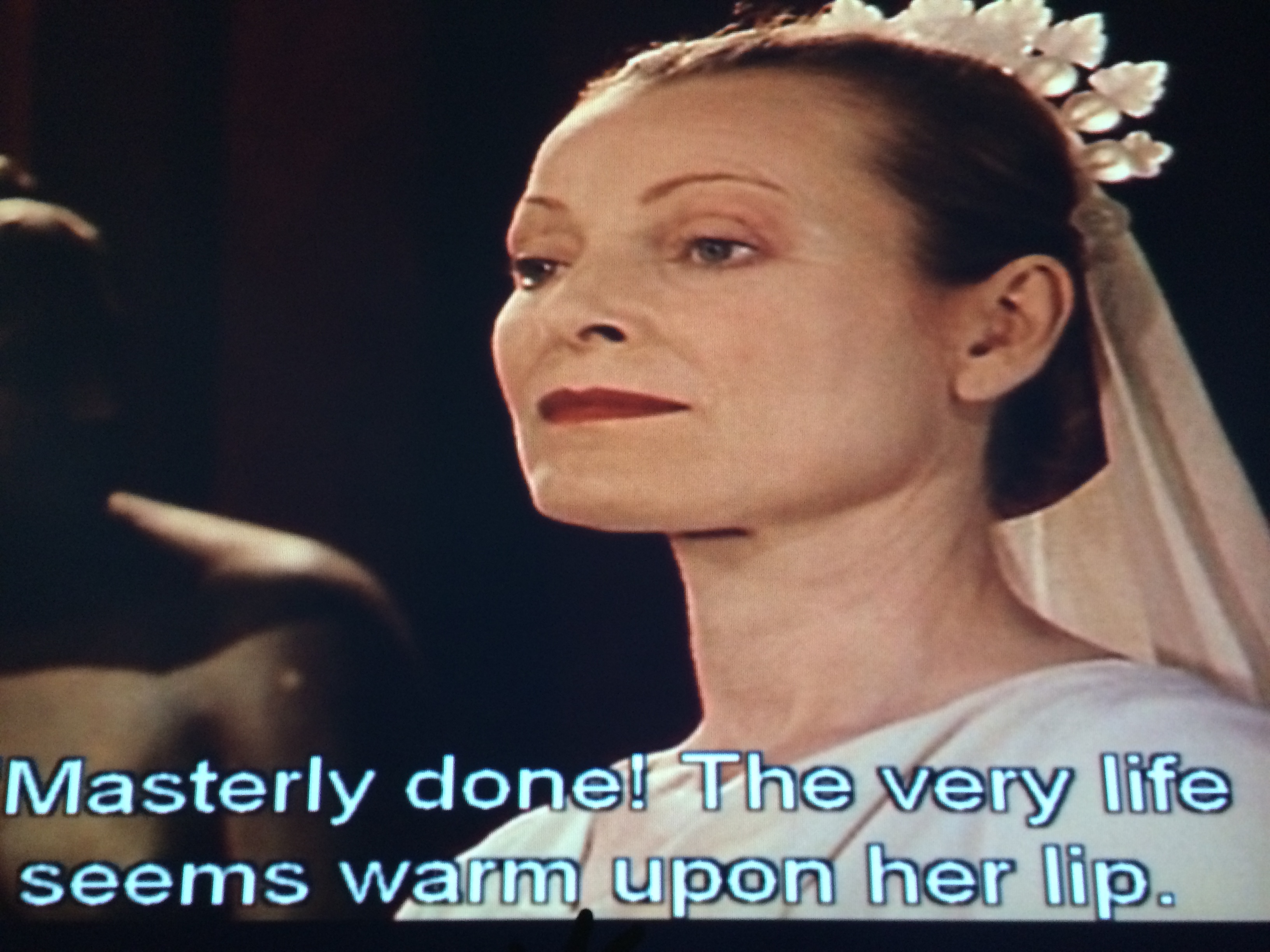
Fig. 9. Frame detail from Conte d’Hiver (Éric Rohmer, 1992). Observing a staging within the stage drama, Leontes praises Paulina’s powers of illusion as she presides over Hermione’s resurrection.
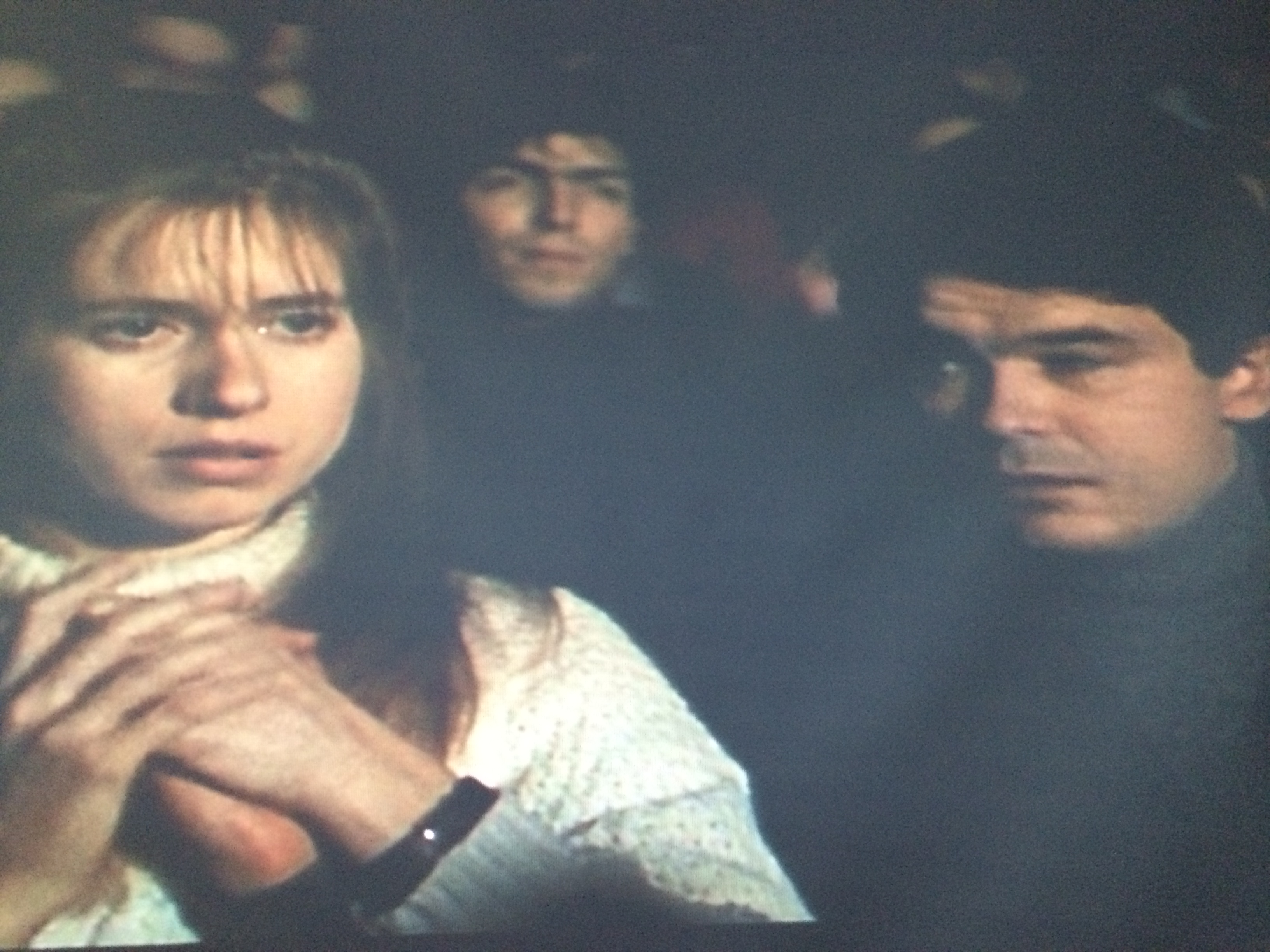
Fig. 10. Frame detail from Conte d’Hiver (Éric Rohmer, 1992). As the statue begins to move, Félicie instinctively clasps the skeptical Loïc’s hand.
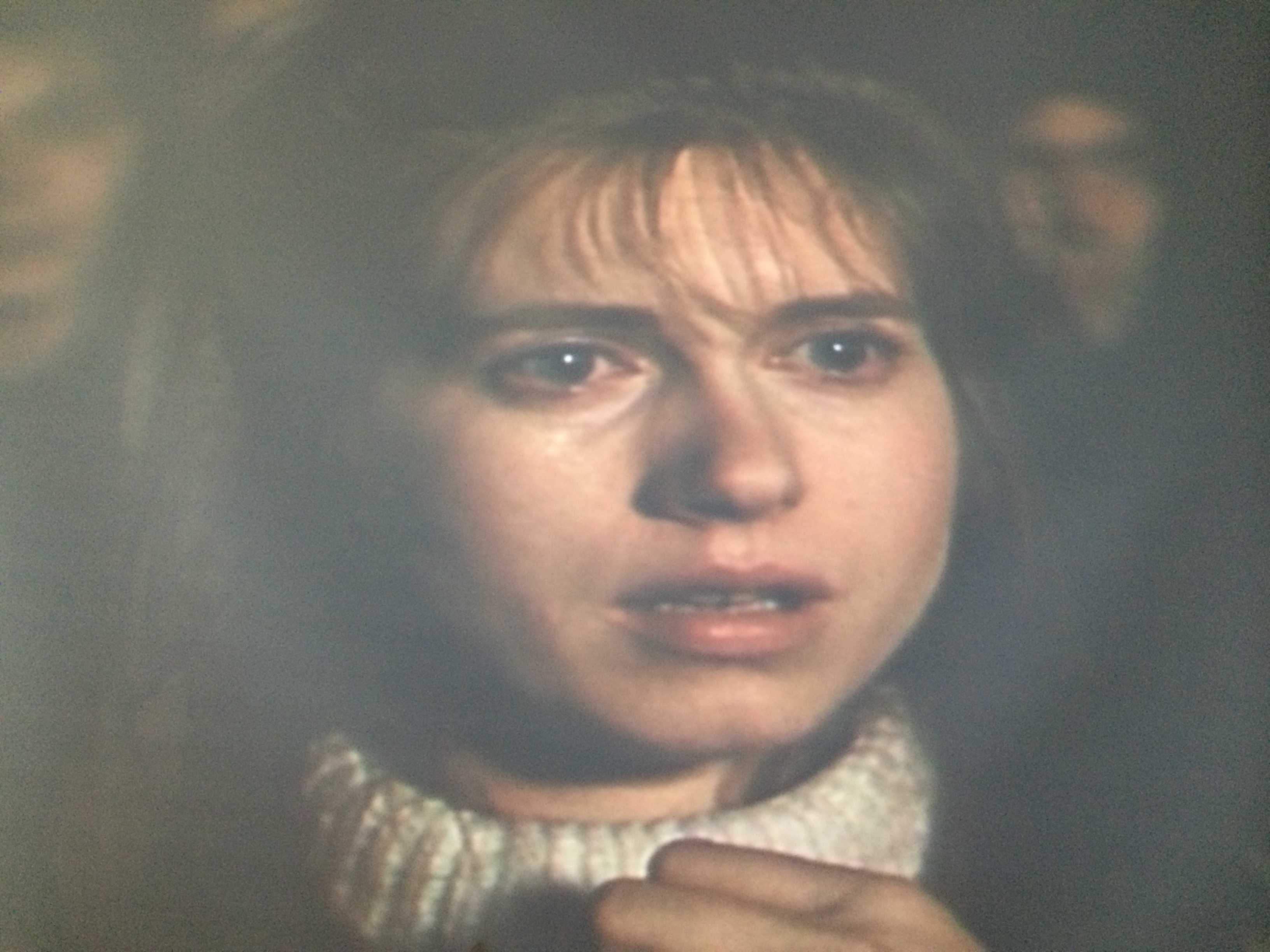
Fig. 11. Frame detail from Conte d’Hiver (Éric Rohmer, 1992). A zoom-in reveals the tears gathering in Félicie’s eyes.

Fig. 12. Frame detail from Conte d’Hiver (Éric Rohmer, 1992). On stage, Perdita, gazing in startled reverence, begins to approach and kneel before her living mother.
Authorial Oedipalism in Godard’s King Lear and Welles’s King Lear
19 Godard’s strange and infinitely challenging King Lear has preoccupied me for much of my career, the traces of this engagement finding its way into articles and part of a book. In this film Godard, no doubt to Ruiz’s chagrin, represents all-but-irresolvable conflicts as binary oppositions: the art of film and the commerce of filmmaking; the presence of prior adaptations abolishing the possibility of fidelity in the present one; intertextual gain arising from textual loss.
20 As with my previous cinematic examples I will highlight a particular scene, assuming a certain familiarity with the text as a whole. In that scene Edgar tosses the crumpled, rediscovered pages of a text that could either be a printed First Folio (in which, of course, a hand-written letter condemns Edgar to vagrancy), or Welles’s typescript of a screen adaptation of the play. Since both subsumed texts enjoy at least a provisional existence, Godard’s conceit is that his version realizes Welles’s ambition in the wake of the 1985 death of the author, even as it marks the premature demise of the now zealous but hypocritically mournful New Wave auteurs. Tantalizingly, there are hints in Godard’s film that he may have been aware of Welles’s sketches, and he was certainly aware of Welles’s public pronouncements in which (probably for financial motives) he claimed to have in mind the austerity of Carl Theodor Dreyer’s 1927 La Passion de Jeanne d’Arc: set primarily in winter, Welles’s King Lear calls to mind Peter Brook’s version more immediately than that of Kozintsev, whom Godard cites elaborately, but it bears little more than a remorseless psychological affinity to the much older film, which Godard also cites by way of his own Vivre sa vie (1962).
21 Like a son’s lighting of a parent’s funeral pyre, immolation is at once depicted as an act of unconscious filial piety and textual erasure. The shivering Edgar is in need of warmth; the signs ― to recapitulate Chartier ― are not only symbols. Yet, in this process of annihilating over-writing, in the contamination of an instigating text by generations of its “offspring,” and even in the light of the then-present Chernobyl catastrophe, Godard continues to respond to New Wave paternity sui generis, albeit in a grim, mortuary light that is altogether colder than that cast by Chabrol in the early years, for the movement was by now bereft of true fathers and devoted sons: Bazin, Truffaut, Welles. Godard’s response to Truffaut is at once homage (as is his later tribute to Rohmer) and the final, unanswerable rejoinder in their unfinished conversation. There can be no fidelity in adaptation, for only the ashes of the past can give birth to the true phoenix. Godard’s text remains problematic not merely because it is a requiem, but because he permits us to glimpse the ashes before they have been shaken from golden wings. [19]
Conclusion
22 The talismanic figure of Orson Welles, the director most-often cited with approval by the critics of Cahiers du cinéma, seemed to provoke a particular reflex when, as nouvelle vague auteurs, they turned to the ultra-canonical textual terrain of Shakespeare. As the movement matured beyond the 1968 watershed, the brilliant black and white cinematography of Welles’s adaptations and those of the early nouvelle vague gave way not only to a richer palette of colors, but also to more solemn, somber and philosophical meditations on the nature of adaptation itself. An attachment to their origins as cinéphiles gave common cause to filmmakers who were as much Swiss and Chilean as they were French, their Frenchness being a matter of time and place and affinity rather than national sentiment. It is their probing of different kinds of faith that in the end defined a “tendency” as the young Truffaut vigorously maintained; but that tendency, as their replies to him prove, increasingly articulated a loss of certainty. [20]
Bibliography
- CALLOW, Simon. Orson Welles. Vol. 2: Hello Americans. New York: Penguin Books, 2006.
- CHARTIER, Roger. Cultural History: Between Practices and Representations. Ithaca: Cornell University Press, 1988.
- CHRISTIE, Ian. “Where is National Cinema Today (and Do We Still Need It?).” Film History 25.1-2 [Spr. 2013]: 19-30.
- DARNTON, Robert. The Great Cat Massacre and Other Episodes in French Cultural History. New York: Basic Books, 1984.
- GRAHAM, Peter & Ginette Vincendeau. The French New Wave: Critical Landmarks. London: BFI, Palgrave-Macmillan, 2008.
- GUNERATNE, Anthony. Shakespeare, Film Studies, and the Visual Cultures of Modernity. New York: Palgrave Macmillan, 2008.
- NAFICY, Hamid. An Accented Cinema: Exilic and Diasporic Filmmaking. Princeton: Princeton University Press, 2001.
- OSTROWSKA, Dorota. Reading the French New Wave: Critics, Writers and Art Cinema in France. London: Wallflower Press, 2008.
- STAM, Robert. François Truffaut and Friends: Modernism, Sexuality, and Film Adaptation. New Brunswick: Rutgers University Press, 2006.
Notes
1. See Darnton, The Great Cat Massacre and Other Episodes in French Cultural History (New York: Basic Books, 1984), and the chapter Chartier devotes to it in Cultural History: Between Practices and Representations (Ithaca: Cornell University Press, 1988), pp. 95-111. Drawing on Stith Thompson’s exhaustive studies of the constitutive elements of folktales, Darnton provides vignettes of early variants of such stories handed down within an oral tradition. In concentrating on certain crucial scenes within the films I discuss, I adopt a similar approach to narrative structures, albeit within a more narrowly-defined terrain.
2. For a recent contribution to the debates surrounding the embattled concept of national cinemas derived from notions of polity ― successively challenged by studies of the medium’s simultaneous origins, of industries geared to film export, of trends in trans- and multi-national production, and by the emergence of “de-westernizing” and world cinema approaches ― see Ian Christie’s “Where is National Cinema Today (and Do We Still Need It?),” in which he proposes, somewhat forlornly, that in keeping with the “audience turn” in film studies some utility may still be found in the term in the study of audiences’ susceptibilities (Film History 25.1-2 [Spr. 2013]: 19-30).
3.Vincendeau, “Fifty Years of the French New Wave: From Hysteria to Nostalgia,” in Peter Graham, with Ginette Vincendeau, The French New Wave: Critical Landmarks (London: BFI, Palgrave-Macmillan, 2008), pp. 1-29. See, also, the introduction to Dorota Ostrowska’s Reading the French New Wave: Critics, Writers and Art Cinema in France (London: Wallflower Press, 2008), pp. 1-17.
4. Astruc, “The Birth of the New Avant-garde: La Caméra-Stylo,” in Graham, op. cit., 31-7.
5. Truffaut, “A Certain Tendency in French Cinema,” in Graham, op. cit., 39-64.
6. The case study Robert Stam offers is Jules et Jim (1962) in François Truffaut and Friends: Modernism, Sexuality, and Film Adaptation (New Brunswick: Rutgers University Press, 2006).
7. See pp. 206-7 of Shakespeare, Film Studies, and the Visual Cultures of Modernity (New York: Palgrave Macmillan, 2008).
8. See Vincendeau, op. cit., p. 10.
9. See Guneratne, op. cit., 217-25.
10. And here too, one must be aware of individual difference within the coterie. Among the Cahiers critics, Doniol-Valcroze was the most favorable to narrative indeterminacy, the only filmmaker-critic who would even review Alain Robbe-Grillet’s L’Immortelle (1963) in its pages: indeed, Dorota Ostrowska suggests that this position ran against the initial sensibilities of the politique des auteurs (see op. cit., 138, 161-8). Note that Robbe-Grillet helped script Chabrol’s Ophélia.
11. See, for instance, Gladys Goodall’s prognostication that Welles’s Utah version of the play (intended to precede its filming) would “never have the beauty of Olivier’s Henry V” but that its “ghoulish effects will be intensified in moving pictures” (see the second installment of Simon Callow’s biography of Welles, Hello Americans [New York: Penguin Books, 2006], p. 391). In cinematic terms, the Shakespearean stage and film director whose style most closely resembled his was, in fact, Grigory Kozintsev, who also favored deep staging and dense sound textures.
12. Note, in this context, my discussion of Olivier’s film and Chabrol’s reading of it in Guneratne, op. cit., 206-8, 284-5.
13. Callow, op. cit., 421-2, notes Cocteau’s enthusiasm for this “film maudit,” and quotes him in extenso.
14. See “A Certain Tendency,” op. cit., 60. Note also that in addition to being the ultra-canonical figure of Bazin’s 1957 “La politique des auteurs,” Welles was probably more congenial to Chabrol, who preached against “grand themes” (in that he made modest themes seem grand), in this regard than Olivier (see Graham, op. cit., 149-54).
15. See, for instance, his discussion of Hollywood scripting and “central conflict theory” in the opening chapter (pp. 9-23) of The Poetics of Cinema (Tr. Brian Holmes, Paris: Éditions Dis Voir, 2005).
16. As a way of explaining different narrative “paradigms,” Ruiz suggests three possible ways of constructing the death of Julius Caesar and abruptly shifts to a dismissive discussion of Welles’s belief that originality could find expression in the studio system (Welles having staged the play in a famous production): if the influence is not direct, it may still strike Freud as unconscious, yes, even Oedipal (see op. cit., pp. 120-1). See, also, Naficy, An Accented Cinema: Exilic and Diasporic Filmmaking (Princeton: Princeton University Press, 2001), pp. 46-56.
17. For a more extended comparison of Ruiz’s film to Chimes, see Guneratne, op. cit., 200-5.
18. See, for instance, Ostrowska’s “Éric Rohmer and Cinema as a Visual Novel” (op. cit., 30-6), and for contrast Robert Benayoun’s mocking rejoinder to Rohmer’s comparison of the arts in a 1955 article for Cahiers entitled “Celluloid and Marble” (see the translation of the 1962 Positif article “The Emperor has no Clothes” in Graham, op. cit., 163-86).
19. Again, for a more detailed discussion, see Guneratne, op. cit., 217-25.
20. This essay has benefitted from a number of conversations following its initial presentation at the Shakespeare 450 conference, and I am particularly indebted to my colleagues who participated in Seminar 15 (“Shakespeare in French Film / France in Shakespearean Film”) convened by Douglas Lanier and Melissa Croteau. To the latter, and to Maurizio Calbi, another participant at that gathering, I owe much encouragement and advice concerning its publication.
How to Cite
GUNERATNE, Anthony. “A Certain Tendency in Post-New Wave French Shakespearean Cinema: from early Truffaut to late Godard via Orson Welles.” In Patricia Dorval & Nathalie Vienne-Guerrin (eds). Shakespeare on Screen in Francophonia: The Shakscreen Collection 4. Montpellier (France): IRCL, Université Paul-Valéry/Montpellier 3, 2016. Online: http://shakscreen.org/post-new_wave_french_cinema/.
Contributed by Anthony Guneratne
<< back to top >>



